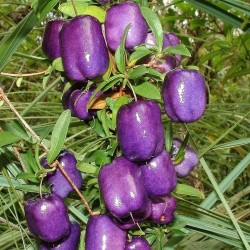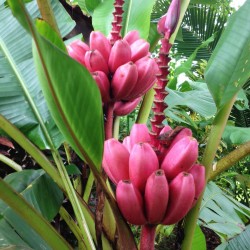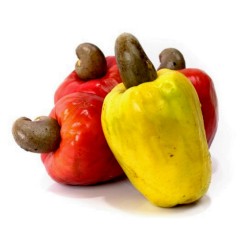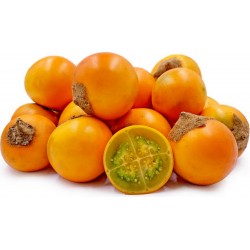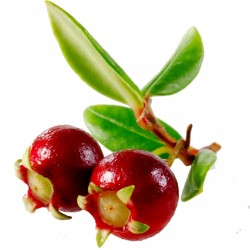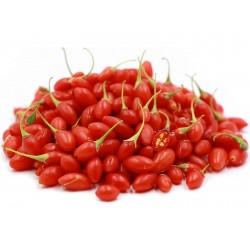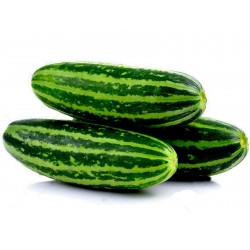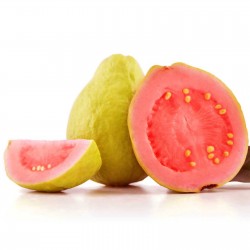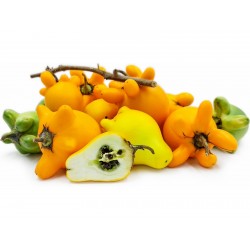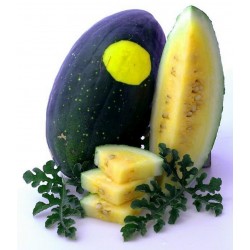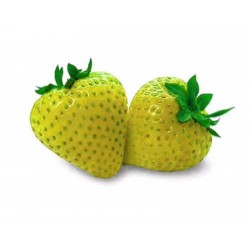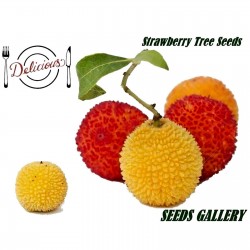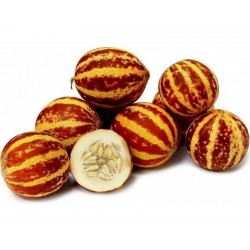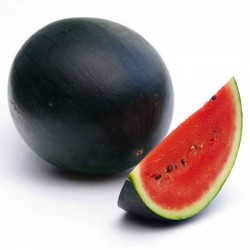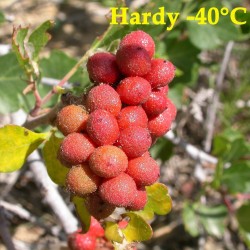Seeds Gallery EU,
5/
5
<div class="container">
<div class="row">
<div class="col-12">
<h2 class=""><strong>Semena Godži (goji) (Lycium chinense)</strong></h2>
<h2><span style="color: #ff0000;"><strong>Cena za balení 50 (0,036g) nebo 200 (0,15 g) semen.</strong></span></h2>
<p><b>Godži</b><span> </span>(goji) jsou plody dvou druhů<span> </span>kustovnice,<span> </span>kustovnice cizí<span> </span>(<i>Lycium barbarum</i>) a blízce příbuzné<span> </span>kustovnice čínské<span> </span>(<i>L. chinense</i>). Kustovnice jsou opadavé keře s jednoduchými střídavými listy a pravidelnými purpurovými květy, řazené do čeledi<span> </span>lilkovité<span> </span>a pocházející z<span> </span>Asie. Pěstují se zejména ve střední a severní<span> </span>Číně. Plody a mladé listy jsou v asijských zemích součástí jídelníčku, plody a kůra kořenů jsou využívány v místní<span> </span>medicíně. Na přelomu tisíciletí se godži objevilo i na trhu v<span> </span>Evropě<span> </span>a<span> </span>Severní Americe<span> </span>a od té doby jeho obliba stoupá. V České republice jsou sušené plody běžnou součástí sortimentu obchodů se zdravou výživou a<span> </span>potravními doplňky. V některých jiných zemích jsou nabízeny též<span> </span>džusy<span> </span>s obsahem šťávy z godži.</p>
<p>Medicínské studie potvrdily řadu léčivých účinků plodů<span> </span>kustovnice, pro které jsou v asijské medicíně využívány již po celá tisíciletí. Zároveň se kolem tohoto produktu točí celá řada mýtů a omylů, a to jak v identitě rostlin, oblasti a způsobu jejich pěstování a sběru, tak i co se týče proklamovaných účinků a obsahových látek. Prodávané plody také často obsahují stopy různých<span> </span>pesticidů.</p>
<p>Godži jsou plody dvou blízce příbuzných druhů<span> </span>kustovnice, a sice<span> </span>kustovnice cizí<span> </span>(<i>Lycium barbarum</i>) a<span> </span>kustovnice čínské<span> </span>(<i>L. chinense</i>). Oba druhy jsou opadavé<span> </span>keře<span> </span>s jednoduchými listy, dorůstající obvykle výšky 0,5 až 2 metry. Mají pravidelné, purpurově zbarvené květy nálevkovitého tvaru.<span> </span>Plodem<span> </span>je žlutooranžová až červená dužnatá<span> </span>bobule. Plody jsou vejcovité až podlouhlé a obsahují 4 až větší počet žlutých nebo žlutohnědých, plochých<span> </span>semen. U kustovnice cizí jsou 0,4 až 2 cm dlouhé a 0,5 až 1 cm široké a semena jsou větší (2,5 až 3 mm). Kustovnice čínská mívá ve volné přírodě plody asi 0,7 až 1,5 cm dlouhé a 5 až 8 cm široké. U pěstovaných rostlin bývají větší, až 2,2 cm dlouhé a 1 cm široké. Také var.<span> </span><i>potaninii</i><span> </span>má větší plody, až 2,5 cm. Semena jsou jen asi 2 mm dlouhá. Za zralosti se plody uvolňují z vytrvalého zeleného kalichu a opadávají.<sup id="cite_ref-flch_1-0" class="reference">[1]</sup><span> </span>Velikost a tvar plodů a množství semen jsou u různých kultivarů kustovnice cizí odlišné. Některé v Číně v současné době pěstované kultivary jsou hybridogenního původu.<sup id="cite_ref-badenes_2-0" class="reference">[2]</sup><span> </span>Oba druhy kustovnice jsou si značně podobné. Hlavní rozlišovací znaky spočívají v poměrné velikosti květních částí, tvaru kalicha a ochlupení koruny, dále ve vzrůstnosti rostlin, tvaru listů a velikosti semen. Většina rostlin pěstovaných a nabízených jako kustovnice čínská je ve skutečnosti kustovnice cizí.<sup id="cite_ref-flch_1-1" class="reference">[1]</sup><sup id="cite_ref-plfut_3-0" class="reference">[3]</sup></p>
<p>Sušené plody godži jsou oranžovočervené a mají svraštělý povrch. Chutí poněkud připomínají<span> </span>rajčata. Vůně může připomínat<span> </span>datle,<span> </span>rozinky<span> </span>nebo sušené<span> </span>brusinky<span> </span>a lze v ní rozeznat i sladké<span> </span>lékořicové<span> </span>tóny.</p>
<h2><span class="mw-headline" id="Původ_a_rozšíření_kustovnice">Původ a rozšíření kustovnice</span></h2>
<p>Jako země původu<span> </span>kustovnice cizí<span> </span>je zpravidla uváděna Čína,<sup id="cite_ref-flch_1-2" class="reference">[1]</sup><sup id="cite_ref-pwo_4-0" class="reference">[4]</sup><span> </span>některé zdroje však jako původní areál rozšíření uvádějí oblast jihovýchodní Evropy a Malé Asie.<sup id="cite_ref-kv6_5-0" class="reference">[5]</sup><span> </span>V současné době se vyskytuje zdomácnělá v teplejších oblastech Evropy, Asie a Severní Ameriky a v severní Africe. Ve své domovině (v Číně) roste zejména v křoviskách, pustinách, zasolených místech, podél cest a v okolí lidských sídel. Je rozšířena od teplejších oblastí<span> </span>mírného pásu<span> </span>po<span> </span>subtropy.<sup id="cite_ref-edmed6_6-0" class="reference">[6]</sup><sup id="cite_ref-mencinis_7-0" class="reference">[7]</sup><span> </span>V České republice se vyskytuje roztroušeně až hojně v celém termofytiku a v teplejších oblastech mezofytika. Roste zde na druhotných stanovištích, zejména na okrajích cest, na rumištích a neudržovaných místech, podél zdí apod., zejména na sušších, zásaditých, lehkých, živinami bohatých půdách.<sup id="cite_ref-kv6_5-1" class="reference">[5]</sup><span> </span>Kustovnice čínská<span> </span>se vyskytuje v Asii od jihozápadní Asie přes Čínu a Mongolsko po Japonsko a Thajsko. O původnosti druhu v různých částech tohoto areálu není dostatek informací. V Evropě občas roste jako zdomácnělá.</p>
<h2><span id="Obsahov.C3.A9_l.C3.A1tky"></span><span class="mw-headline" id="Obsahové_látky">Obsahové látky</span></h2>
<p>Mezi hlavní účinné látky v plodech kustovnice náležejí<span> </span>polysacharidy<span> </span>a<span> </span>karotenoidy. Paleta obsahových látek je poměrně široká. Dále jsou přítomny<span> </span>flavonoidy, volné<span> </span>aminokyseliny,<span> </span>vitamíny,<span> </span>mastné kyseliny,<span> </span>steroidy<span> </span>a různé další látky. Godži je rovněž bohaté na minerální látky. Na rozdíl od většiny jiných<span> </span>lilkovitých<span> </span>rostlin neobsahují dané druhy kustovnice v relevantním množství<span> </span>alkaloidy<span> </span>a ani<span> </span>glykosidy. Ve 100g sušeného godži je obsaženo celkem 391 kcal energie, 56 g cukrů, 7,4 g vlákniny, 11 g bílkovin a 3,6 g tuků.<sup id="cite_ref-krasovskaya_9-0" class="reference">[9]</sup></p>
<h3><span class="mw-headline" id="Polysacharidy">Polysacharidy</span></h3>
<p>Z hlediska účinků nejvýznamnější a nejvíce studované obsahové látky plodů kustovnice jsou polysacharidy, označované zkratkou LBP (<i>lycium barbarum polysacharides</i>), a glykopeptidy, označované jako LBGp. Tvoří asi 5 až 8 % hmotnosti suchého plodu. Jsou to látky rozpustné ve vodě. Jedná se o komplexní směs, v níž převládají silně větvené heteropolysacharidy, polypeptidy a<span> </span>proteoglykany. Asi 90 až 95 % této směsi molekul tvoří<span> </span>cukerné<span> </span>jednotky. Zastoupena je<span> </span>xylóza,<span> </span>glukóza,<span> </span>arabinóza,<span> </span>galaktóza,<span> </span>manóza,<span> </span>rhamnóza<span> </span>a<span> </span>kyselina galakturonová. Podle některých údajů převládá xylóza a glukóza, podle studie z roku 2010 převládá arabinóza. Rovněž v nich bylo zjištěno celkem 18<span> </span>aminokyselin. Některé z polysacharidů a glykopeptidů byly izolovány v čisté podobě pomocí<span> </span>chromatografických<span> </span>metod.</p>
<h3><span class="mw-headline" id="Karotenoidy">Karotenoidy</span></h3>
<p>V suchých plodech godži je obsaženo 0,03 až 0,5 %<span> </span>karotenoidů<sup id="cite_ref-amagase_11-1" class="reference">[11]</sup><span> </span>(pro srovnání, v čerstvé mrkvi je 0,06 až 0,3 %<sup id="cite_ref-fiksel_13-0" class="reference">[13]</sup>). Tyto látky jsou zodpovědné za oranžovou až červenou barvu plodů a jejich obsah stoupá s tím, jak plody dozrávají. V extraktech z plodů kustovnice cizí bylo zjištěno celkem 11 volných a 7 esterově vázaných karotenoidů. Asi třetinu až polovinu množství těchto látek v dužnině plodů představuje dipalmitát<span> </span>zeaxantinu<span> </span>(průměrně asi 114 mg/100g), dále je přítomen palmitát β-kryptoxanthinu (3,3 až 6,9 mg/100g), monopalmitát zeaxantinu (1,1 až 6,3 mg/100g), volný zeaxantin (0,14 mg/100g),<span> </span>β-karoten<span> </span>(2,4 mg/100g) aj. V semenech kustovnice cizí představuje 83 % karotenoidů zeaxantin, dále je zastoupen β-kryptoxanthin, β-karoten, mutatoxanthin a malá množství dalších, dosud neidentifikovaných karotenoidů.</p>
<h3><span id="Vitam.C3.ADny"></span><span class="mw-headline" id="Vitamíny">Vitamíny</span></h3>
<p>V plodech kustovnice cizí jsou obsaženy zejména vitamíny<span> </span>B2<span> </span>(riboflavin),<span> </span>B1<span> </span>(thiamin) a<span> </span>vitamín C. Obsah vitamínu C se v suchých plodech pohybuje okolo 42 až 49 mg na 100 gramů a je srovnatelný s množstvím obsaženým v<span> </span>citrusových<span> </span>plodech. V čerstvých plodech je obsaženo asi 30 mg vitamínu C na 100 g. Vitamín B1 je obsažen v množství asi 0,35 mg na 100 gramů suché váhy, vitamín B2 0,46 mg. Rovněž je přítomen<span> </span>vitamín E<span> </span>(tokoferol).</p>
<h3><span id="Miner.C3.A1ln.C3.AD_l.C3.A1tky"></span><span class="mw-headline" id="Minerální_látky">Minerální látky</span></h3>
<p>Plody godži jsou bohaté na minerální látky. Představují v rámci ovoce jeden z nejbohatších zdrojů<span> </span>železa,<span> </span>zinku,<span> </span>manganu,<span> </span>mědi<span> </span>a<span> </span>chromu. V plodech importovaných z Číny byl zjištěn průměrný obsah železa (v mg/kg suchých plodů) 67 mg, zinku 110 mg, manganu 6 mg, mědi 8,3 mg, chromu 0,4 mg. Množství obsažené ve 20 g suchého godži představuje asi 25 % doporučené denní dávky zinku, 18 % mědi, 23 až 32 % chromu a 7 až 17 % železa. V plodech godži bylo dále zjištěno celkem 21<span> </span>stopových prvků, zejména<span> </span>selen<span> </span>a<span> </span>kobalt.<sup id="cite_ref-amagase_11-3" class="reference">[11]</sup><sup id="cite_ref-gogoasa_16-0" class="reference">[16]</sup></p>
<h3><span id="Dal.C5.A1.C3.AD_l.C3.A1tky"></span><span class="mw-headline" id="Další_látky">Další látky</span></h3>
<p>Z dalších látek jsou přítomny<span> </span>flavonoidy<span> </span>(myricetin,<span> </span>kvercetin,<span> </span>kempferol,<span> </span>rutin<span> </span>aj.),<span> </span>kumariny<span> </span>(skopoletin,<span> </span>kyselina p-kumarová), různé<span> </span>mastné kyseliny,<span> </span>glycerogalaktolipidy, derivát<span> </span>dopaminu<span> </span>lyciumid, deriváty<span> </span>fenolu<span> </span>a<span> </span>pyrrolu<span> </span>aj. Plody kustovnice cizí obsahují 1 až 2,7 % volných<span> </span>aminokyselin, mezi nimiž převládá<span> </span>prolin. Z nebílkovinných aminokyselin je přítomen<span> </span>taurin,<span> </span>kyselina γ-aminobutyrová<span> </span>a<span> </span>trimethylglycin<span> </span>(betain). Plody rovněž obsahují malá množství různých<span> </span>steroidů. Zajímavou obsahovou látkou je<span> </span>L-monomenthyl sukcinát. Je to látka bez chuti s fyziologicky ochlazujícím účinkem na organismus, obsažená také např. v<span> </span>mátě peprné.<sup id="cite_ref-potterat_10-3" class="reference">[10]</sup><sup id="cite_ref-harsh_17-0" class="reference">[17]</sup><sup id="cite_ref-erman_18-0" class="reference">[18]</sup><sup id="cite_ref-zou_19-0" class="reference">[19]</sup></p>
<h2><span id="Historie_a_p.C5.AFvod_n.C3.A1zvu"></span><span class="mw-headline" id="Historie_a_původ_názvu">Historie a původ názvu</span></h2>
<p>Godži je v asijské medicíně využíváno již tisíce let. První písemná zmínka je v nejstarší dochované čínské knize o léčivých rostlinách, v díle<span> </span><i>Šen-nung pen-cchao-ťing</i><span> </span>(<span class="cizojazycne" lang="zh" title="čínština">神农本草经</span>) z druhého století před naším letopočtem. Kustovnice je zde uváděna jako jedna ze 120 základních léčivých rostlin. Další zmínky jsou v díle<span> </span><i>Jao-sing lun</i><span> </span>(<span class="cizojazycne" lang="zh" title="čínština">药性论</span>) ze 7. století za doby dynastie<span> </span>Tchang. Podle klasických historických spisů<span> </span>tradiční čínské medicíny<span> </span>godži zejména posiluje energii<span> </span>jin<span> </span>v dráze ledvin a jater, zlepšuje zrak a přispívá k vitalitě a dlouhověkosti.<sup id="cite_ref-benzie_20-0" class="reference">[20]</sup><sup id="cite_ref-hudock_21-0" class="reference">[21]</sup><span> </span>Používání godži se rozšířilo na sklonku vlády<span> </span>dynastie Ming<span> </span>(14.-17. století), kdy začalo být obecně používáno zejména jako<span> </span>tonikum.</p>
<p>Název godži je odvozen od výrazu pro kustovnici ve staré<span> </span>mandarínštině:<span> </span><i>gǒuqǐ</i><span> </span>(枸杞). Ve zjednodušené formě<span> </span><i>goji</i><span> </span>se začal v anglofonním světě používat po roce 2000.<sup id="cite_ref-gross_22-0" class="reference">[22]</sup><sup id="cite_ref-dharmananda_23-0" class="reference">[23]</sup><sup id="cite_ref-food_24-0" class="reference">[24]</sup><span> </span>Následně byl přejat i do českého jazyka.</p>
<h2><span id="V.C3.BDzkum_a_konven.C4.8Dn.C3.AD_medic.C3.ADna"></span><span class="mw-headline" id="Výzkum_a_konvenční_medicína">Výzkum a konvenční medicína</span></h2>
<p>Plody kustovnice cizí i kustovnice čínské se v medicíně označují shodným názvem<span> </span><i>Fructus lycii</i>.</p>
<h3><span id="Celkov.C3.A9_p.C5.AFsoben.C3.AD"></span><span class="mw-headline" id="Celkové_působení">Celkové působení</span></h3>
<p>V letech 2008 až 2009 bylo v USA provedeno celkem 5 randomizovaných lékařských studií, které prokázaly celkové zlepšení subjektivního stavu pacientů při podávání džusu s godži oproti kontrolní skupině, která dostávala<span> </span>placebo. Pacientům byl podáván džus s obsahem godži odpovídajícím 150 g čerstvých plodů po dobu 14 nebo 30 dnů. Účinek se týkal subjektivního pocitu pohody, zlepšení neurologického a psychického stavu a funkcí oběhové, svalové a trávicí soustavy, a to zcela bez vedlejších účinků.<sup id="cite_ref-benzie_20-1" class="reference">[20]</sup></p>
<h3><span id="Antioxida.C4.8Dn.C3.AD_.C3.BA.C4.8Dinky"></span><span class="mw-headline" id="Antioxidační_účinky">Antioxidační účinky</span></h3>
<p>Ve vícero studiích<span> </span>in vivo<span> </span>i<span> </span>in vitro<span> </span>bylo prokázáno<span> </span>antioxidační<span> </span>působení plodů kustovnice cizí. Hlavními účinnými látkami jsou v tomto případě<span> </span>polysacharidy,<span> </span>flavonoidy<span> </span>a aminokyselina<span> </span>trimethylglycin<span> </span>(betain). Tyto látky se podílejí na antioxidačním účinku svojí<span> </span>redukční kapacitou, tvorbou<span> </span>chelátů<span> </span>s ionty<span> </span>kovů<span> </span>a vychytáváním volných<span> </span>radikálů. Bylo prokázáno ochranné působení na oční<span> </span>rohovku<span> </span>před oxidativním poškozením při onemocněních jako je<span> </span>glaukom,<span> </span>retinální ischémie<span> </span>a<span> </span>cukrovka. V případě plodů kustovnice čínské bylo studií méně, hlavní antioxidační účinek se zde projevuje v ochraně<span> </span>jaterních<span> </span>buněk, související s obsaženými flavonoidy.</p>
<h3><span id="Stimulace_imunitn.C3.ADho_syst.C3.A9mu"></span><span class="mw-headline" id="Stimulace_imunitního_systému">Stimulace imunitního systému</span></h3>
<p>Ve studiích in vitro bylo zaznamenáno komplexní stimulující působení na<span> </span>imunitní systém, zahrnující podporu množení<span> </span>splenocytů<span> </span>(buněk imunitního systému, tvořících se ve<span> </span>slezině) a<span> </span>T-lymfocytů<span> </span>(ve studiích in-vitro i in-vivo na myších) a podporu vyzrávání<span> </span>dendritických buněk<span> </span>a zlepšování jejich<span> </span>imunogenicity. Mají rovněž kladný význam pro<span> </span>expresi<span> </span>některých genů, vedoucí k tvorbě molekul důležitých pro funkci imunitního systému.</p>
<h3><span id="Protirakovinn.C3.A9_p.C5.AFsoben.C3.AD"></span><span class="mw-headline" id="Protirakovinné_působení">Protirakovinné působení</span></h3>
<p>Plody kustovnice cizí mají při léčení rakoviny potenciál zejména jako<span> </span>adjuvans, tedy prostředek zesilující imunitní reakci organismu na určitý antigen. Ve studii na myších bylo prokázáno protirakovinné působení určité frakce polysacharidů z plodů kustovnice cizí, a to konkrétně na sarkom (nádor pojivové tkáně). Toto působení bylo spojeno se zvýšenou fagocytózou, zvýšenou tvorbou lymfocytů ve slezině, aktivitou T-lymfocytů a expresí IL-2 mRNA genu. In vitro bylo prokázáno též působení vodního extraktu proti nádorovým buňkám lidských jater (hepatocelulární karcinom), které se projevovalo stimulací apoptózy a inhibicí množení (proliferace) těchto buněk. Podkožně aplikované polysacharidy z kustovnice navíc při pokusech na myších snižují úbytek bílých i červených krvinek při chemoterapii či ozařování nádorů.<sup id="cite_ref-potterat_10-6" class="reference">[10]</sup><sup id="cite_ref-amagase_11-5" class="reference">[11]</sup></p>
<h3><span id="Toxicita.2C_vedlej.C5.A1.C3.AD_.C3.BA.C4.8Dinky_a_kontraindikace"></span><span class="mw-headline" id="Toxicita,_vedlejší_účinky_a_kontraindikace">Toxicita, vedlejší účinky a kontraindikace</span></h3>
<p>Plody kustovnice jsou zcela<span> </span>nejedovaté, což je potvrzeno dlouhou historií užívání i toxikologickými testy. Jejich požívání nemá<span> </span>vedlejší účinky<span> </span>a není znám žádný případ předávkování či otravy. Nedoporučuje se užívání při<span> </span>krvácivých<span> </span>onemocněních a<span> </span>hypoglykémii. Byly zaznamenány ojedinělé případy interakce s léčivým přípravkem<span> </span>warfarinem, projevující se sníženou<span> </span>srážlivostí krve. U<span> </span>alergiků<span> </span>se může objevit alergická reakce, projevující se zejména kopřivkou a dalšími kožními projevy. Přichází v úvahu zejména u osob alergických na<span> </span>tabák,<span> </span>rajčata,<span> </span>broskve<span> </span>nebo<span> </span>ořechy. V některých zdrojích se nedoporučuje užívání kustovnice v průběhu<span> </span>těhotenství, a to kvůli stimulujícímu účinku na<span> </span>dělohu. O bezpečnosti užívání v průběhu<span> </span>kojení<span> </span>nejsou dostupné žádné informace. Určité riziko může pocházet ze záměny plodů s některými jinými, toxickými druhy<span> </span>lilkovitých<span> </span>rostlin. Z rostlin volně rostoucích v České republice má podobné plody například<span> </span>lilek potměchuť.</p>
<p>V literatuře (např. v díle<span> </span><i>Květena ČR</i>) jsou občas zmínky o tom, že plody kustovnice cizí jsou jedovaté. Za účinnou látku je označována nebílkovinná aminokyselina<span> </span>trimethylglycin<span> </span>(betain). V toxikologických studiích však byla tato látka shledána netoxickou, a to i ve vysokých dávkách.<sup id="cite_ref-hyaes_29-0" class="reference">[29]</sup><sup id="cite_ref-kv6_5-2" class="reference">[5]</sup><sup id="cite_ref-jedros_30-0" class="reference">[30]</sup><span> </span>V roce 1989 byla publikována studie, v níž byl popsán obsah jedovatého<span> </span>atropinu<span> </span>v plodech indického godži, dosahující 0,95 %. Pozdější studie plodů kustovnice pocházejících z různých oblastí potvrdily pouze stopový obsah atropinu, dosahující hodnot maximálně 0,0019 % a tedy z toxikologického hlediska zanedbatelný.<sup id="cite_ref-potterat_10-8" class="reference">[10]</sup><sup id="cite_ref-harsh2_31-0" class="reference">[31]</sup></p>
<h2><span id="God.C5.BEi_v_Evrop.C4.9B_a_Severn.C3.AD_Americe"></span><span class="mw-headline" id="Godži_v_Evropě_a_Severní_Americe">Godži v Evropě a Severní Americe</span></h2>
<p>Historie obliby kustovnice v Evropě je velmi mladá. Mimo čínskou komunitu se godži začalo objevovat na přelomu tisíciletí a celkem rychle získalo věhlas „superovoce“ s velkou nutriční hodnotou.<sup id="cite_ref-benzie_20-3" class="reference">[20]</sup><sup id="cite_ref-mencinis_7-1" class="reference">[7]</sup><span> </span>V Evropské unii mělo godži zprvu status tzv. potraviny nového typu (<i>novel food</i>), později po přezkoumání dostupných informací a vzhledem k dlouhé historii jeho užívání bylo přeřazeno do kategorie potravin. Obchod s godži jako potravinou byl v Evropě uvolněn mezi lety 2002 až 2007. Jako složka některých potravních doplňků se objevovalo v Evropě již před rokem 1997, v USA o několik let dříve.<sup id="cite_ref-benzie_20-4" class="reference">[20]</sup><span> </span>V České republice jsou sušené plody godži v prodávány zejména v obchodech se zdravou výživou a potravními doplňky. V USA i některých jiných zemích je godži často nabízeno ve formě džusu, nejčastěji ve směsi se šťávou z jiného ovoce.</p>
<h2><span id="V.C3.BDznam_v_Asii"></span><span class="mw-headline" id="Význam_v_Asii">Význam v Asii</span></h2>
<p>V Asii je godži tradičně využíváno jako léčivo i jako potravina. Dlouhou tradici medicínského využití má zejména v<span> </span>Číně,<span> </span>Vietnamu,<span> </span>Tibetu,<span> </span>Koreji<span> </span>a<span> </span>Japonsku.</p>
<h3><span id=".C4.8C.C3.ADnsk.C3.A1_medic.C3.ADna"></span><span class="mw-headline" id="Čínská_medicína">Čínská medicína</span></h3>
<p>V Číně je oficiální drogou pouze<span> </span>kustovnice cizí, v lidové medicíně se však používají oba druhy.<sup id="cite_ref-potterat_10-9" class="reference">[10]</sup><span> </span>V čínské medicíně se plody kustovnice používají zejména jako<span> </span>tonikum<span> </span>k posílení vitality a prodloužení života, ke snížení<span> </span>cholesterolu<span> </span>a<span> </span>krevního tlaku, při léčení<span> </span>ledvinových<span> </span>chorob a k ochraně funkce<span> </span>jater, na<span> </span>závratě<span> </span>a bolesti hlavy, ke zlepšení<span> </span>zraku<span> </span>a léčení očních chorob (např.<span> </span>tupozrakosti), při předčasném výronu semene, na boláky v dolní části těla souvisejícími se slabostí ledvin a k posílení svalů a kostí. V Číně jsou rovněž oblíbené posilující polévky s godži, kuřecím a vepřovým masem, různou zeleninou a dalšími bylinami, jako je divoký<span> </span>smldinec<span> </span>a kořen<span> </span>lékořice.<sup id="cite_ref-badenes_2-3" class="reference">[2]</sup><sup id="cite_ref-chinmed_32-0" class="reference">[32]</sup><sup id="cite_ref-phchin_33-0" class="reference">[33]</sup><sup id="cite_ref-val2_34-0" class="reference">[34]</sup><span> </span>Nejčastější lékovou formou je odvar ze 6 až 12 g plodů, podávaný ve dvou nebo třech denních dávkách na lačno. Alternativní lékovou formou se lihový výluh s přídavkem medu. Další tradiční lékovou formou je prášek ze směsi godži a dalších léčivých bylin, z něhož se za pomoci medu zhotovují pilulky. Rovněž je součástí různých čajových směsí: ke snížení váhy (v kombinaci s<span> </span>kasií východoasijskou,<span> </span>pornatkou kokosovou,<span> </span>listopadkou indickou<span> </span>a jinými bylinami), proti stárnutí (s<span> </span>kozincem blanitým,<span> </span>lesklokorkou lesklou<span> </span>aj.). V pojmosloví tradiční čínské medicíny mají plody godži povahu vyrovnanou, chuť sladkou a tropizmus k dráze jater a ledvin.<sup id="cite_ref-benzie_20-5" class="reference">[20]</sup><sup id="cite_ref-val2_34-1" class="reference">[34]</sup><span> </span>Jako levnější náhražky pravého godži se na čínském trhu objevují i plody jiných druhů či variet, jako je<span> </span><i>L. barbarum</i><span> </span>var.<span> </span><i>aurantiocarpum</i>,<span> </span><i>L. chinense</i><span> </span>var.<span> </span><i>potaninii</i>,<span> </span><i>L. ruthenicum</i><span> </span>a<span> </span><i>L. truncatum</i>.<sup id="cite_ref-potterat_10-10" class="reference">[10]</sup></p>
<h3><span id="Vyu.C5.BEit.C3.AD_v_.C4.8D.C3.ADnsk.C3.A9_kuchyni"></span><span class="mw-headline" id="Využití_v_čínské_kuchyni">Využití v čínské kuchyni</span></h3>
<p>Godži je v Číně populární i jako potravina. Plody se konzumují čerstvé, sušené nebo zpracované do podoby džusu nebo vína. Jsou také oblíbenou ingrediencí přidávanou do různých rýžových kaší, polévek a masových i zeleninových pokrmů. Mladé listy a výhonky jsou ceněnou zeleninou. Pražené semeno je používáno jako náhražka kávy, z listů se připravuje bylinný čaj.</p>
<h3><span class="mw-headline" id="Vietnam">Vietnam</span></h3>
<p>Ve Vietnamu je kustovnice čínská hojně pěstována zejména pro mladé listy jako<span> </span>zelenina. Plody se užívají při léčbě celkové ochablosti,<span> </span>impotence, předčasného výronu semene,<span> </span>ischias,<span> </span>tupozrakosti,<span> </span>závratích,<span> </span>cukrovce. Rovněž jsou používány jako omlazující prostředek. Denní dávka 4 až 16 g plodů v podobě odvaru nebo<span> </span>alkoholového<span> </span>výluhu. Kůra kořenů se používá při krvavém kašli, nočním pocení a<span> </span>hematurii. Denní dávka je 6 až 12 g v podobě odvaru.<sup id="cite_ref-viet_35-0" class="reference">[35]</sup><span> </span>Plody jsou sbírány od srpna do října, a to v časných ranních nebo pozdně odpoledních hodinách. Suší se nejprve v tenké vrstvě ve stínu, dosušují se na plném slunci nebo v sušičkách při 40 až 45 °C. Kořeny se sbírají na podzim a na jaře, po omytí se z nich loupe kůra, která se suší na slunci nebo v sušičkách.<sup id="cite_ref-viet_35-1" class="reference">[35]</sup></p>
<h3><span class="mw-headline" id="Indie">Indie</span></h3>
<p>V Indii roste nebo je pěstována kustovnice cizí zejména ve státech<span> </span>Paňdžáb,<span> </span>Rádžasthán,<span> </span>Gudžarát<span> </span>a<span> </span>Maháráštra. V indické medicíně jsou plody a kůra kořenů kustovnice používány jako prostředek stimulující imunitní systém a zpomalující stárnutí, antioxidant a též prostředek proti množení nádorových buněk.</p>
<h3><span class="mw-headline" id="Japonsko">Japonsko</span></h3>
<p>V Japonsku jsou plody, kůra a kořeny kustovnice (je uváděna kustovnice čínská) používány při ochablosti, slabosti, nedostatku vitality a podlomeném zdraví.<sup id="cite_ref-Comp2_36-0" class="reference">[36]</sup><span> </span>Předpisy a kombinace bylin vycházejí z<span> </span>tradiční čínské medicíny. V kombinaci s<span> </span>listopadkou indickou<span> </span>se používá na zlepšování zraku zejména v souvislosti se stárnutím. Spolu s dalšími 7 bylinami je součástí kombinace<span> </span><i>Kogikujiougan</i>, předepisované osobám se sníženou vitalitou.<sup id="cite_ref-benzie_20-6" class="reference">[20]</sup></p>
<h3><span class="mw-headline" id="Korea">Korea</span></h3>
<p>Plody kustovnice se v korejské medicíně používají zejména při vyčerpávajícím kašli a ochablosti, stravujících horečkách,<span> </span>edému<span> </span>a vysokém tlaku.</p>
<h2><span id="Omyly_a_m.C3.BDty_ohledn.C4.9B_god.C5.BEi"></span><span class="mw-headline" id="Omyly_a_mýty_ohledně_godži">Omyly a mýty ohledně godži</span></h2>
<p>Godži jakožto produkt na evropském trhu mladý provázejí četné omyly a mystifikace. Prudký nárůst jeho obliby v průběhu posledního desetiletí předběhl tok informací. Omyly a nesprávné informace se týkají zejména samotné identity rostlin, z nichž se godži sklízí, oblasti původu, způsobu pěstování a sběru a také výjimečnosti léčivých účinků a obsahových látek.</p>
<h3><span id="Kustovnice_.C4.8D.C3.ADnsk.C3.A1"></span><span class="mw-headline" id="Kustovnice_čínská">Kustovnice čínská</span></h3>
<p>Godži nabízené na trhu je v převažující míře nesprávně označováno jako plody<span> </span>kustovnice čínské. To však neodpovídá skutečnosti, neboť převážná většina godži pěstovaného v Číně a vyváženého do zahraničí jsou plody<span> </span>kustovnice cizí, případně vyšlechtěných kultivarů, získaných hybridizací kustovnice cizí s vybranými jinými druhy kustovnic. Godži jsou tedy plody té samé kustovnice, která roste běžně zdomácnělá i v teplejších oblastech České republiky.<sup id="cite_ref-potterat_10-12" class="reference">[10]</sup></p>
<h3><span id="Tibetsk.C3.A9_a_him.C3.A1lajsk.C3.A9_god.C5.BEi"></span><span class="mw-headline" id="Tibetské_a_himálajské_godži">Tibetské a himálajské godži</span></h3>
<p>Naprostá většina godži na západních trzích pochází z komerčních plantáží ve střední a severní Číně. Často je však na trhu nabízeno a obchodováno jako<span> </span>tibetské<span> </span>nebo<span> </span>himálajské<span> </span>godži. Jedním z možných důvodů této mystifikace je snaha o odstranění stigmatu znečištěného prostředí, které s sebou nesou produkty z Číny.</p>
<p>V roce 2006 se vypravil novinář čínského deníku<span> </span><i>South China Morning Post</i><span> </span>do Tibetu, aby zde zdokumentoval pěstování tibetského godži. To je proklamováno firmou Tibet Authentic jako jediné pravé tibetské godži, sbírané v čisté horské přírodě v regionech<span> </span>Lhokha<span> </span>(Šan-nan) a<span> </span>Ňingthri<span> </span>v jihovýchodním Tibetu. Výsledkem jeho cesty bylo zpochybnění legendy o tibetském godži a o jeho užívání Tibeťany k dosažení dlouhověkosti. Novinář obešel ve<span> </span>Lhase<span> </span>12 obchodů s tibetskou medicínou, nabízeli mu však pouze godži dovážené z klasické čínské oblasti<span> </span>Ning-sia<span> </span>a o tibetském godži nikdy neslyšeli. Vypravil se i do regionu Ňingthri. Zde sice kustovnice roste, rozhodně však ne ve větším množství a domorodci si jí nijak nepovažují. Navíc se ukázalo, že plody godži jsou firmou Tibet Authentic zpracovávány ve 2000 kilometrů vzdáleném<span> </span>Čcheng-tu<span> </span>v čínské provincii<span> </span>S’-čchuan, které je hlavním centrem zpracování a obchodu s plody godži z čínské oblasti Ning-sia. Odtud jsou naopak plody čínského godži dováženy do tibetských obchodů, a to v množství řádově stovek tun ročně. Celá záležitost s tibetským godži se tak ukázala jako jeden velký podvod.<sup id="cite_ref-tibaut_38-0" class="reference">[38]</sup><sup id="cite_ref-parry_39-0" class="reference">[39]</sup><sup id="cite_ref-rabin_40-0" class="reference">[40]</sup><span> </span>Tanaduk Botanical Research Institute, přímo propojený se společností dovážející godži do USA, zachází ještě dále a popisuje tibetské godži jako zvláštní druh kustovnice,<span> </span><i>Lycium tibeticum</i>. Takové botanické jméno však nebylo nikdy publikováno.<sup id="cite_ref-tibgoj_41-0" class="reference">[41]</sup><span> </span>Navíc kustovnici je možno v daných zeměpisných šířkách pěstovat do nadmořské výšky okolo 2000 metrů, což většinu území Tibetu vylučuje.<sup id="cite_ref-edmed6_6-3" class="reference">[6]</sup></p>
<h3><span id="M.C3.BDty_o_obsahov.C3.BDch_l.C3.A1tk.C3.A1ch"></span><span class="mw-headline" id="Mýty_o_obsahových_látkách">Mýty o obsahových látkách</span></h3>
<p>Další soubor mýtů se týká obsahových látek. Na různých stránkách zejména propagačního charakteru se lze dočíst, že godži obsahuje 500× více<span> </span>vitamínu C<span> </span>než<span> </span>citrusové<span> </span>plody (což by odpovídalo, při obsahu vitamínu C v citrusech kolem 50mg/100g, bezmála jedné čtvrtině váhy sušeného godži), že obsahuje 6× více<span> </span>aminokyselin<span> </span>než<span> </span>včelí pyl, celkem 18 (včelí pyl obsahuje nejméně 22 různých aminokyselin a ve větším množství než godži), že obsahuje enormní množství<span> </span>železa<span> </span>– 11 mg na 100 gramů (ve skutečnosti je to asi polovina, což je množství srovnatelné např. se<span> </span>sójovými boby).<sup id="cite_ref-sunlife_42-0" class="reference">[42]</sup><sup id="cite_ref-tables_14-1" class="reference">[14]</sup><sup id="cite_ref-enviro_43-0" class="reference">[43]</sup><span> </span>Rovněž informace o obsahu<span> </span>karotenoidů<span> </span>se často nezakládají na pravdě. V některých zdrojích se uvádí, že godži obsahuje více<span> </span>betakarotenu<span> </span>než<span> </span>mrkev. Ve skutečnosti je v čerstvé mrkvi srovnatelné množství (v hmotnostních procentech) karotenoidů jako v sušeném godži, podíl betakarotenu je však v godži pouze zlomkový a převažuje zde<span> </span>zeaxantin.<sup id="cite_ref-amagase_11-6" class="reference">[11]</sup><sup id="cite_ref-fiksel_13-1" class="reference">[13]</sup><span> </span>Také celková antioxidační aktivita je sice dosti vysoká, není však výjimečná. Je srovnatelná s<span> </span>kiwi<span> </span>a<span> </span>brusinkami<span> </span>a nižší než u zralých<span> </span>třešní.<sup id="cite_ref-fan_44-0" class="reference">[44]</sup></p>
<h3><span id="Organick.C3.A9_hospod.C3.A1.C5.99stv.C3.AD"></span><span class="mw-headline" id="Organické_hospodářství">Organické hospodářství</span></h3>
<p>Ačkoliv je godži poměrně často prodávané jako<span> </span>bio<span> </span>nebo případně jako plody sbírané z divokých rostlin v nedotčené přírodě, převážná většina plodů na trhu pochází z komerčních plantáží. V Číně navíc není bio zemědělství nijak uzákoněno a při pěstování se běžně používají<span> </span>pesticidy. V roce 2010 byl proveden rozbor 26 různých vzorků sušeného godži na obsah pesticidů. Výsledky studie byly závažné. Bylo zjištěno celkem 38 různých pesticidů, v průměru 11 na vzorek. Pouze 6 ze všech vzorků (včetně 2 nabízených jako bio) splňovalo povolené evropské normy pro maximální obsah residuí jednotlivých pesticidů. Překročení normy se ve většině případů týkalo<span> </span>acetamipridu, v ojedinělých případech<span> </span>chlorothalonilu<span> </span>a<span> </span>propargitu. Pesticidy byly rovněž zjištěny ve 4 vzorcích prodávaných jako natural.<span style="font-size: 11.6667px;"> </span>Rovněž zpráva americké FDA (<i>U.S. Food and Drug Administration</i>) z března 2015 přináší přehled různých pesticidů zjištěných ve vzorcích godži od celé řady dovozců. Mezi zjištěnými pesticidy zde dominuje zejména<span> </span>acetamiprid,<span> </span>fenvalerát,<span> </span>karbendazim,<span> </span>triadimenol<span> </span>a<span> </span>fenpropathrin.</p>
<h2><span id="Oblasti_p.C4.9Bstov.C3.A1n.C3.AD"></span><span class="mw-headline" id="Oblasti_pěstování">Oblasti pěstování</span></h2>
<p>Kustovnice je komerčně pěstována zejména v severní a severozápadní Číně. Jedná se převážně o kustovnici cizí. Centrem pěstování je autonomní oblast Ning-sia, dále se pěstuje zejména v autonomní oblasti<span> </span>Sin-ťiang.<span style="font-size: 11.6667px;"> </span>V menším měřítku se pěstuje i v jiných asijských zemích, dále v Kanadě a USA, Rumunsku, Bulharsku apod.</p>
<h3><span id="Autonomn.C3.AD_oblast_Ning-sia"></span><span class="mw-headline" id="Autonomní_oblast_Ning-sia">Autonomní oblast Ning-sia</span></h3>
<div class="thumb tright">
<div class="thumbinner"><img alt="" src="https://upload.wikimedia.org/wikipedia/commons/thumb/6/6d/Rich_Nature_Wolfberry_Farm1_7-06.jpg/220px-Rich_Nature_Wolfberry_Farm1_7-06.jpg" decoding="async" width="220" height="176" class="thumbimage" srcset="//upload.wikimedia.org/wikipedia/commons/thumb/6/6d/Rich_Nature_Wolfberry_Farm1_7-06.jpg/330px-Rich_Nature_Wolfberry_Farm1_7-06.jpg 1.5x, //upload.wikimedia.org/wikipedia/commons/thumb/6/6d/Rich_Nature_Wolfberry_Farm1_7-06.jpg/440px-Rich_Nature_Wolfberry_Farm1_7-06.jpg 2x" data-file-width="1712" data-file-height="1368" />
<div class="thumbcaption">
<div class="magnify"></div>
Plantáž godži v oblasti Ning-sia</div>
</div>
</div>
<p>Asi polovina godži produkovaného v Číně se pěstuje v oblasti<span> </span>Ning-sia<span> </span>v severní Číně. Zdejší godži je zmiňováno již v čínském lékopise<span> </span><i>Pen-cchao kang-mu</i><span> </span>(<span class="cizojazycne" lang="zh" title="čínština">本草纲目</span>) ze 16. století. Půda i klima v této oblasti jsou pro pěstování kustovnice velmi vhodné. Laboratorními testy bylo potvrzeno, že zdejší godži je co do obsahu účinných látek kvalitnější než plody z jiných oblastí. Komerční pěstování bylo založeno vládními projekty v roce 1987. V roce 2000 zde bylo godži pěstováno na výměře 7300 hektarů a roční produkce byla 16 000 tun. Od roku 2005 produkce raketově roste, v roce 2011 to již bylo 90 000 tun na výměře bezmála 50 000 hektarů. Jednotliví pěstitelé v Ning-sia pěstují kustovnici na plochách o výměře 0,08 až 0,8 ha.</p>
<p>Půda v oblasti Ning-sia je<span> </span>sprašová, lehce zásaditá (pH 7-8). Plantáže se zde rozkládají zejména na říčních terasách v údolí<span> </span>Žluté řeky<span> </span>a na okolních svazích. Je zde kontinentální klima s tuhými zimami a suchými a teplými léty. Vyrábí se zde sušené godži, šťáva, koncentrát, mleté godži a také olej ze semen. Na plantážích se vysazují klonálně množené kulturní kultivary, nikoliv rostliny ze semen.</p>
<h2><span id="P.C4.9Bstov.C3.A1n.C3.AD"></span><span class="mw-headline" id="Pěstování">Pěstování</span></h2>
<h3><span id="N.C3.A1roky"></span><span class="mw-headline" id="Nároky">Nároky</span></h3>
<p>Kustovnice jsou nenáročné a odolné dřeviny. Vyžadují plné slunce nebo alespoň polostín. Dobře zakořeněné rostliny snášejí i sucho, jsou však citlivé na přemokření. Rostou v nejrůznější půdě, snášejí půdy chudé i bohaté živinami, písčité, zasolené, jílovité (pokud jsou propustné), kyselé i zásadité. Jsou odolné vůči znečištění a snášejí i blízkost moře. Snášejí mrazy do -23 až -25 °C a letní teploty do 40 °C.<span> </span>Zóna odolnosti<span> </span>je udávána 6 až 9.</p>
<p>Optimální stanoviště pro pěstování kustovnice je v propustné, písčité nebo štěrkovité, živinami středně bohaté, neutrální až lehce zásadité půdě na plném výsluní. Pokud je pěstována pro jedlé výhonky, je vhodná živinami bohatší půda.<sup id="cite_ref-plfut_3-2" class="reference">[3]</sup><span> </span>V jedné čínské studii bylo zjištěno, že 100mM koncentrace soli v půdě podporuje růst semenáčků, zvyšuje nárůst rostlinné hmoty a také obsah betainu v rostlinách. Dvojnásobná koncentrace již měla spíše negativní efekt.<sup id="cite_ref-wei_49-0" class="reference">[49]</sup><span> </span>Pro optimální zrání plodů a vysoký obsah účinných látek je potřebné suché a horké léto. Chladnější nebo vlhké letní počasí snižuje jejich kvalitu a v mokru mohou plody praskat.</p>
<h3><span id="P.C4.9Bstov.C3.A1n.C3.AD_v_.C4.8Cesk.C3.A9_republice"></span><span class="mw-headline" id="Pěstování_v_České_republice">Pěstování v České republice</span></h3>
<div class="thumb tright">
<div class="thumbinner"><img alt="Semena Godži (goji) (Lycium chinense)" src="https://upload.wikimedia.org/wikipedia/commons/thumb/c/cc/Kallusweg_sl1.jpg/220px-Kallusweg_sl1.jpg" decoding="async" width="220" height="165" class="thumbimage" srcset="//upload.wikimedia.org/wikipedia/commons/thumb/c/cc/Kallusweg_sl1.jpg/330px-Kallusweg_sl1.jpg 1.5x, //upload.wikimedia.org/wikipedia/commons/thumb/c/cc/Kallusweg_sl1.jpg/440px-Kallusweg_sl1.jpg 2x" data-file-width="4128" data-file-height="3096" title="Semena Godži (goji) (Lycium chinense)" />
<div class="thumbcaption">
<div class="magnify"></div>
Kustovnice jako invazní dřevina, Rakousko</div>
</div>
</div>
<p>Kustovnici cizí je možno vysadit kdekoliv, kde je dostatek slunce a nepřemokřená půda. Je použitelná na živé ploty, je možno ji však vysadit i jako solitéru. Dá se použít i na neplodná místa, jako jsou náspy, exponované svahy a rumiště, kde ostatní dřeviny selhávají. Rychle odnožuje a v příznivém prostředí se může stát obtížným plevelem.</p>
<p>Kustovnice cizí kvete od června do srpna, plody dozrávají od července či srpna do října. Květy jsou opylovány zejména včelami. Dobře snáší řez a je schopna obrazit i ze starého dřeva. Řez je nejlépe provádět na jaře. Semena se vysévají na jaře a brzy klíčí. Semenáčky je vhodné v prvním roce přezimovat ve skleníku. Ochotně se množí zelenými řízky od června do srpna nebo zimními dřevnatými řízky, dále odkopky a oddělky.</p>
<h3><span id="Komer.C4.8Dn.C3.AD_p.C4.9Bstov.C3.A1n.C3.AD_a_zpracov.C3.A1n.C3.AD"></span><span class="mw-headline" id="Komerční_pěstování_a_zpracování">Komerční pěstování a zpracování</span></h3>
<h4><span class="mw-headline" id="Kultivary">Kultivary</span></h4>
<p>Výzkumné centrum v<span> </span>Jin-čchuan, hlavním městě provincie<span> </span>Ning-sia, je jediná instituce v Číně zabývající se vývojem nových kultivarů kustovnice. Byly zde vyvinuty 4 kultivary, na jejichž vzniku se též podílela hybridizace kustovnice cizí s jinými druhy<span> </span>kustovnic. Nejvíce je pěstován kultivar označovaný 'Ninxia #1', který je vysazen na přibližně 80 % plochy plantáží godži v této provincii a je pěstován i v jiných oblastech. Jeho plody mají nejvyšší antioxidační potenciál. V západních zemích je znám pod označením<span> </span><i>Lycium barbarum</i><span> </span>'Crimson Star'. Ninxia #3 je nový velkoplodý kultivar, odolný vůči suchu. Kultivar 'Ninxia #4' má dužnaté mladé výhonky a byl vyvinut pro sklizeň výhonků. Mají vysoký obsah antioxidantů a chutnají podobně jako špenát.</p>
<h4><span id="Zakl.C3.A1d.C3.A1n.C3.AD_plant.C3.A1.C5.BE.C3.AD"></span><span class="mw-headline" id="Zakládání_plantáží">Zakládání plantáží</span></h4>
<div class="thumb tright">
<div class="thumbinner"><img alt="" src="https://upload.wikimedia.org/wikipedia/commons/thumb/0/0c/Repiquage_d%27un_plant_de_goji_de_4_mois_germ%C3%A9_en_Octobre_2008.jpg/220px-Repiquage_d%27un_plant_de_goji_de_4_mois_germ%C3%A9_en_Octobre_2008.jpg" decoding="async" width="220" height="249" class="thumbimage" srcset="//upload.wikimedia.org/wikipedia/commons/thumb/0/0c/Repiquage_d%27un_plant_de_goji_de_4_mois_germ%C3%A9_en_Octobre_2008.jpg/330px-Repiquage_d%27un_plant_de_goji_de_4_mois_germ%C3%A9_en_Octobre_2008.jpg 1.5x, //upload.wikimedia.org/wikipedia/commons/0/0c/Repiquage_d%27un_plant_de_goji_de_4_mois_germ%C3%A9_en_Octobre_2008.jpg 2x" data-file-width="354" data-file-height="400" />
<div class="thumbcaption">
<div class="magnify"></div>
Sazenice kustovnice cizí</div>
</div>
</div>
<p>Pro zakládání plantáží jsou nejvhodnější zatravněné plochy nebo pole s<span> </span>jednoletými<span> </span>plodinami. Nejvíce vyhovuje zem s třetinovým podílem písku a lehce zásaditou reakcí (pH<span> </span>8,2-8,6). Hladina<span> </span>spodní vody<span> </span>by neměla být vyšší než 80 až 90 cm pod povrchem. Na podzim nebo na jaře se hnojí organickým<span> </span>hnojivem<span> </span>(2 t/ha),<span> </span>superfosfátem<span> </span>(30-50kg/ha) a<span> </span>potaší<span> </span>(15kg/ha) a poté se hnojivo zaorá. Na jaře nebo v létě se před výsadbou sazenic zem uvláčí a poté se dělají řádky. Na velkých plantážích je optimální vzdálenost mezi řádky 2 až 2,5 metru a sazenice se v řádcích sázejí 1,5 až 2 metry od sebe. Na menších plochách postačí vzdálenost mezi řádky 1,5 metru a vzdálenost rostlin 1 metr. Sazenice se sázejí do vyhloubených děr o hloubce a šířce 20 až 30 cm, na dno je možno dát hnojivo. Poté se zem dobře upěchuje a v každém případě proleje vodou. Zem okolo rostlin je možno pokrýt<span> </span>mulčovacím<span> </span>materiálem.</p>
<h4><span id="O.C5.A1et.C5.99ov.C3.A1n.C3.AD_rostlin"></span><span class="mw-headline" id="Ošetřování_rostlin">Ošetřování rostlin</span></h4>
<p>Kustovnice nejlépe roste na místech bez konkurenční vegetace, kterou je zapotřebí průběžně odstraňovat. Pro bohatou sklizeň plodů je třeba hnojení. Na jaře se hnojí organickým hnojivem, po sklizni superfosfátem a potaší. V době vegetace je možno též přihnojovat<span> </span>dusičnanem amonným, a to na jaře a na počátku zrání plodů. Pro snadnou a bohatou sklizeň se keře prořezávají. Tradičně se dává keřům podoba jednokmenného stromku s deštníkovitou převisající korunou. Hlavní prořezávka se provádí na jaře v květnu. Ve druhém roce po výsadbě se vybere nejsilnější kmen a ostatní se odstraní. Mimo udržování výšky se odstraňují dlouhé, bujně rostoucí výhony ("vlky"), které nenesou plody a ubírají rostlině živiny. Protože kustovnice vyhání v průběhu jara a léta velké množství nových výhonů, dělá se ještě letní prořezávka. V případě příliš hustých korun se odstraňují též vybrané plodonosné větve.<span style="font-size: 11.6667px;"> </span>Plné sklizně dosahují nově založené plantáže po 3 až 4 letech. Rostliny se 2× až 3× ročně ošetřují<span> </span>insekticidy<span> </span>a<span> </span>fungicidy.</p>
<h4><span id="Mno.C5.BEen.C3.AD"></span><span class="mw-headline" id="Množení">Množení</span></h4>
<p>Rostliny se množí<span> </span>řízkováním. Zelené řízky se odebírají v červnu, polotvrdé v červenci až srpnu. Řízky jsou 5 až 10 cm dlouhé a odřezávají se s patkou loňského dřeva. Další možností jsou dřevnaté řízky, sbírané od podzimu do konce zimy a uložené v bezmrazé místnosti k zakořenění. Dřevnaté řízky mají výhodu, neboť rostliny mohou být tentýž rok vysazeny na konečné stanoviště.<sup id="cite_ref-badenes_2-11" class="reference">[2]</sup><span> </span>K získání<span> </span>semen<span> </span>se čerstvé plody propasírují přes síto a dužnina se odplaví. Ve větším měřítku je možno nechat plody nejdříve zetlít. Semena se skladují nasucho při teplotě 5 °C. Klíčení semen je možno podpořit<span> </span>stratifikací<span> </span>ve vlhkém písku v chladu po dobu 2 až 4 měsíců. Vysévají se v teple (20–30 °C). Semenáčky je vhodné v prvním roce zimovat ve skleníku. Ve 2 letech se přesazují.</p>
<h4><span id="Sklize.C5.88_a_zpracov.C3.A1n.C3.AD"></span><span class="mw-headline" id="Sklizeň_a_zpracování">Sklizeň a zpracování</span></h4>
<p>Plody kustovnice se sklízejí ručně. Vhodná mechanizace nebyla dosud vyvinuta. Poškozením větví a nedozrálých plodů se zároveň snižuje výnos následujících sklizní. V oblasti<span> </span>Ning-sia<span> </span>připadá sklizeň na období od konce června do října. Sklízí se v pěti- až sedmidenních intervalech, celkem asi 16× za sezónu.<sup id="cite_ref-badenes_2-13" class="reference">[2]</sup><span> </span>Po sklizni jsou plody buď sušeny nebo se dále zpracovávají na šťávy, mošty a podobně. Sušení probíhá nejčastěji po dobu 7 dní v tenké vrstvě na přímém slunci, řidčeji jsou používány sušičky, které poskytují kvalitnější produkt a proces je rychlejší. Sušením se hmotnost plodů snižuje asi na 15 %.</p>
</div>
</div>
</div>
<div class="container">
<div class="row">
<div class="col-12">
<script src="//cdn.public.n1ed.com/G3OMDFLT/widgets.js"></script>
</div>
</div>
</div>
V 36 R (50 S)

